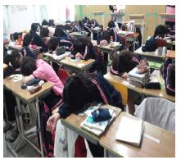
The purpose of this study was to explore Physically Activity Lifestyle pattern & constraints of high school girl in city, and then to propose P.A. promotional ways. I used International Physical Activity Questionnaire Long version and accelerometer to examine outline of P.A. pattern, and photo-voice as qualitative research techniques. The results were as followings. First, sedentary lifestyles of students in G girls' high school was terrible. Accelerometer was said that their inactive time were about 92.4%, however their moderate to vigorous time about 0.76% of the total time of a week. And, school domain of four domains(school, transportation, leisure, domestic chores) were the most active domain of all. Second, P.A. constraints were analyzed as 'because of something no'(time, effort, will, space, physical skills and person) and 'because of something'(smart phone, car, gaze, rules). The key cause were a shortage of time caused by academic based on school curriculum, sedentary leisure and transportation culture. Lastly, I proposed high school girl' P.A. promotional ways in basis of social ecological model.

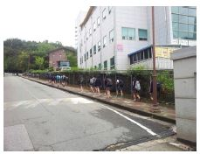
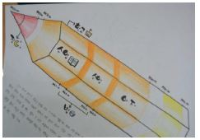
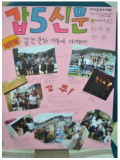
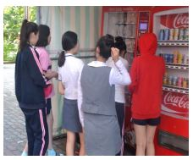






This study was to explore the factors influencing Olympic performance positively and negatively. In order to achieve this purpose, 60 athletes, who participated in 2012 London Olympic games, responded on open-ended questionnaire. In addition, 10 athletes, who won medals in London Olympic, responded on in-depth interview. Collected data were analyzed by deductive content analysis. The results of this study were as follows: firstly, the factors influencing Olympic performance positively were psychological preparation, strengthening training, physical conditioning, support from significant others, material support, cheering of Korean people, self respect as a Korean national athlete, different game environment, team cohesion, sharing Olympic experience, and support of sports science. Secondly, the factors influencing Olympic performance negatively were psychological pressure, excessive expectation, negative interpersonal relationship, condition decline, overtraining, unstable environment, insufficient facilitation, decrease in performance level, and especially ineffective village room placement and media management during Olympic period. Thirdly, the differences between Olympic games and other world competitions , perceived by athletes were competition scale, psychological attitude, training support, systematic preparation, and benefits from winning medals. The results of this study will give fundamental information in developing a scale which can measure Olympic preparation level and in developing Olympic preparation guideline. Therefore, it will help athletes ,who participate Olympic for the first time or athletes who did not perform well in pre-participated Olympic games, to understand and apply in training the factors influencing Olympic performance and help them to perform better in Olympic games.

The purpose of the study was to provide managers and owners of fitness center with new marketing strategies for distinction strategies of quite competitive Korean fitness industry with analysis of mediating effects of consumption emotion within the relationship of fitness selection attribute and customer satisfaction. This paper chose fitness center customers as population of this study who registered in each 5 fitness centers in Seoul and Gyeonggi using convenience sampling. For this study, 400 questionnaires were given fitness center customer. For the analysis of data, 376 questionnaires were used using SPSS 15.0 Windows and Amos 7.0. To examine respondents demographics traits, frequency analysis was processed and reliability analysis, confirmatory factor analysis and correlation analysis for relationship among the variables were conducted. For the verification of model suitability and research hypotheses, the mediating effects were tested by using Bootrapping method and Aroian-test through structure equation modeling. The significance level was set at α=.05, and the results are as follows. First, Among fitness selection attribute variables, structural strategy, cost, a trainer and program had significant influence on customer satisfaction, but, atmosphere and facilities had not significant on customer satisfaction. Second, Among fitness selection attribute variables, structural strategy, cost, a trainer and atmosphere had significant influence on consumption emotion, but, facilities and program had not significant on consumption emotion. Third, consumption emotion had significant influence on customer satisfaction. Fourth, consumption emotion fully mediated in the relationship between fitness selection attribute and customer satisfaction.


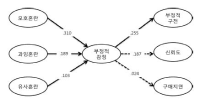
The ever-increasing golf club market made difficult and brought confusion to most of amateur golfers to differentiate and choose suitable clubs for them. Therefore, the purpose of study was to examine how consumer confusion proneness affects consumer’s negative emotion, negative word of mouth, trust and decision postponement, during the process of purchasing golf clubs. 450 questionnaires were distributed to recreational golfers in 6 different golf-driving rages and 4 golf courses located in Seoul, Gyeonggi and Gangwon area with a return rate of 98.4% (n=443). Total of 432 questionnaires were used for data analyses with PASW 18.0 and AMOS 18.0. The results of the study are as follow. First, all of the subordinate factors of consumer confusion proneness had a significant effect on the consumer’s negative emotion. Second, consumer’s negative emotion had a significant effect on negative word of mouth. Third, consumer’s negative emotion had a significant effect on trust. Fourth, consumer’s negative emotion had no significant effect on purchase postponement.

PURPOSE The purpose of this study was to compare the dynamic postural control of youth athletes with and without a history of lateral ankle sprains. METHODS Twenty-eight youth athletes (14 lateral ankle sprain, 14 healthy control) participated in this study. All participants answered the Foot and Ankle Ability Measure questionnaire and were subject to the Star Excursion Balance Test (SEBT) for dynamic postural control evaluation to collect the joint angles of the lower extremity, a center of pressure (COP) path, and COP velocity. Independent sample t-test or Mann-Whitney U-test were performed to analyze the difference between the groups. RESULTS The lateral ankle sprain group (LAS) was found to have a long experience in participating in sports, and low Foot and Ankle Ability Measure scores were identified when compared to the healthy control (CON; p<0.05). LAS was observed with a short reach distance, less hip flexion, and dorsiflexion angles during the anterior direction of SEBT when compared to CON (p<0.05). Furthermore, LAS showed a slower anteroposterior and mediolateral center of pressure velocities in the posteromedial aspect of SEBT and a slower anteroposterior COP velocity in the posterolateral aspect of SEBT when compared to that of CON (p<0.05). There were no differences between the groups with respect to the other variables (p>0.05). CONCLUSIONS Based on these results, decreased anterior reach distance of SEBT may be affected by changing the dynamic posture control strategy of the lower extremity joint on the sagittal plane in LAS.
The purpose of this study was to conduct an in-depth exploration of Korean national badminton players’ psychological momentum strategies. Data were collected using an open-ended questionnaire and group interviews of 66 badminton players, including 40 members of the 2018 Korean national badminton team and 22 college and semi-pro badminton players who each had badminton careers of 10 or more years and were registered in the Badminton Korea Association. The data were analyzed using inductive content analysis and the deductive process based on the inductively categorized results. The results are as follows. First, regarding strategies for maintaining positive momentum, 188 raw data were collected and classified into three category (keeping pace, dominating the play, and psychological facilitation) and 10 sub-category (including speedy resumption of the game, attacking weak points, and fighting shout). The results suggest that badminton players maintain positive momentum by using strategies to control the speed and tempo of the game at their preferred pace, implement special techniques, exploit their opponent’s weaknesses, and cheer or talk amongst themselves to motivate each other and communicate with their partners and coaches. Second, regarding strategies for overcoming negative momentum, 293 raw data points were collected and classified into three category (time outs, psychological reminders, and changes in plays) and 11 sub-category (including delaying the game, seeking social support, and play change). The data demonstrate that badminton players overcome negative momentum using strategies to intentionally delay the game and exchange equipment, focus on performance cues, and interact with their coaches and partners to change plays and prevent errors. It is hoped that these study findings will inform efforts to provide psychological support that is effective in increasing the odds of winning for the national badminton players in the Asian Games and the Olympic.
Purpose The purpose of this study is to examine effects of professional baseball home fans' perception of the community on their recognition of stadium spaces. Methods The subjects of the survey were home fans of baseball. A total of 600 questionnaire(100 fans each team: DOOSAN, LG, SK, LOTTE, HANHWA and KIA) were collected and 510 copies were used as the final analysis data. Collected data was processed by using SPSS 21.0 program. T-test, one-way ANOVA, correction analysis and multiple regression analysis were conducted to test hypothesis. Results There were significant differences of perceptions on community such as perceptions on sense of belonging; favored teams, perceptions on active involvement; gender and favored teams, perceptions on pride of the home town; gender, favored teams and glasses for viewing, and perceptions on classification; educational level and favored teams. There were significant differences of perceptions on stadium spaces such as perceptions on historicity; favored teams and viewing experience, perceptions on authenticity; favored teams and viewing experience, and perceptions on symbolism; age, favored teams and glasses for viewing. Among home fans' perceptions of their community, sense of belonging and pride of the home town had positive effects on their perceptions on historicity among perceptions of stadium spaces, while perceptions of classification had negative effects on them; sense of belonging and pride of the home town had positive effects on both perceptions of authenticity and symbolism. Conclusions The findings indicate that there is a close relationship between the community and professional baseball stadiums, and it is necessary to commonly enhance sense of belonging and pride of the home town for the community in order to promote positive perceptions on stadiums.

Purpose The purpose of this study was to verify the importance and satisfaction of service quality of visitors to screen baseball using the Importance-Performance Analysis. Methods Selected visitors who participated in screen baseball using convenience sampling of non-probability sample method from January 26 to May 27, 2017, and conducted a questionnaire survey to a total of 213 data were used in this study except 17 data which were untrustworthy responses or non-responses. SPSS 21.0 statistical program were used to exploratory factor analysis, reliability analysis, frequency analysis and IPA. Results The results were as follows. first of all,Ⅰquadrant derives 7 items including modernized facilities and equipments. Next, Ⅱ quadrant, there are 5 credibility of the program and continuous service provision. Also, in the quadrant Ⅲ, the service promised to the customer and the interest and effort of the staff in case of trouble were confirmed.. In the quadrant IV, four items were analyzed such as the interest in the members and the matching of the members' use time. In the analysis of Slack's(1994) diagonal model, twelve kinds of improvements such as costumes, appearance, internal facilities and services promised to customers were derived. In addition, there are 5 appropriately provided properties such as modern facilities and equipment, and facilities suitable for enjoying baseball. Finally, in the attributes that are provided in excess, four attributes are indicated, attention to members and matching of members' use time. Conclusion Based on the results of this study, it is meaningful to be a marketing and management practice data for operating the screen baseball.

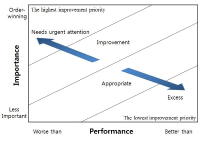


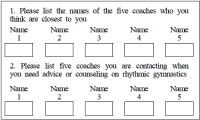
Previous work has shown that coaches sought information from several sources; however, there was a strong reliance on learning from other coaches within their social networks. There has been limited research examining the nature of these social networks with other coaches (Trudel and Gilbert 2004). Thus the purpose of this study was to examine the structures of coaches’ social networks of Korean rhythmic gymnasts. Research questions were: (1) What are the network structures of Korean rhythmic gymnasts’ coaches? (2) What structural parameters contribute to coaches’ network structures, and (3) Is there an association between coaches’ network and flow of information in their networks? A total of 37 coaches of youth rhythmic gymnasts (6-18 years old) participated in this study. Each of those coaches was asked to complete a Name Generator Questionnaire (i.e., list four names that you have a close relationship with) and general socio-demographic survey. Data were analyzed using social network analysis tools such as UCINET, p-net, and Quadratic Assignment Procedure. Analysis of network centrality, density, and strong components showed that (1) homophily was identified in the structure of coaches’ social networks (2) homophily (e.g., by gymnasts’ ranking, mentor coaches) contributed to the total social network of coaches, and (3) interacting only with close coaches in the network, coaches received information about coaches/coaching from the strong ties rather than weak ties (Granovetter, 1973). This study also has strong links to Wenger’s (1998) community of practice which posited that groups of people share a common characteristic in practice.

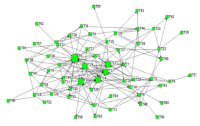
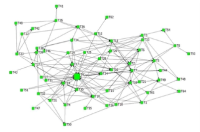
This study conducted to explore K-League (Korea Professional Football League) referees’ psychological experience and coping strategies just after the moment of wrong judgment. Open-ended questionnaire were conducted on 35 full-time referees who participated in the K-League winter training camp. The data were categorized by inductive content analysis. The results were as follows. Psychological experience yielded 45 raw data points, which were based on the following 10 sub categories; increased anxiety, rumination wrong judgment, concern about reprimand, and feeling apologetic; and four general categories including, psychological fragmentation, feeling helpless, concern about reputation, and acknowledgment of wrong judgment. Thus, K-league referees experience a psychological turbulence just after the moment of the bad calls and worsen feelings of helplessness about the wrong decisions. Also, K-league referees worry about further disadvantages following the misjudgement and admit their bad calls feeling sorry for teams and athletes who were in the incidents. Coping strategies yielded 55 raw data points from which the following categories were identified 11 sub categories; increasing concentration, attempting to forget wrong judgment, apologizing on wrong judgment, and change in thinking; and four general categories including, emotional self-support, avoiding situation, correcting the error and thinking, and changing of refereeing approach. Therefore, K-league referees enhance their concentration in order to not reoccur wrong judgement after the moment of the mistakes and try to forget the incidents of wrong judgement. Also, K-league referees apology to the teams and athletes who experienced the bad calls and make efforts to correct the mistakes if possible. Moreover, K-league referees try to modify a criteria of judgement in order to manage aftereffects of wrong judgement and make decisions correctly by approaching the scenes of the wrong judgement. The study emphasizes the importance of referee psychological stability on the field and the need for psychological support. The study is expected to encourage further research on sports referees in Korea to ensure they receive appropriate psychological support.